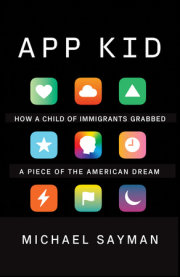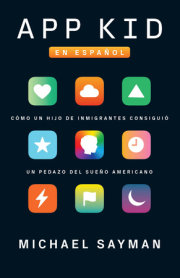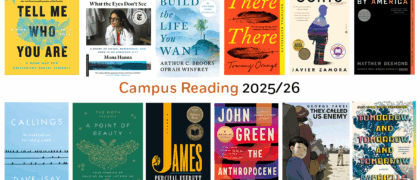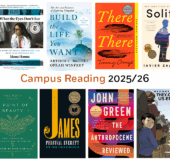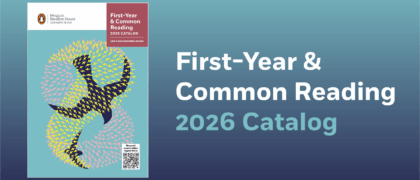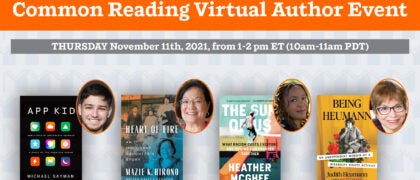Chapter 1
The American Dream
It had always been my parents’ dream to own their own restaurant, so when I was three, they went for it. El Pollon Grill was one of the first Peruvian rotisserie chicken places in Miami, pollo a la brasa, as we called it. It didn’t look like anything special from the outside—just a small building with a neon sign in the middle of a strip mall—but people couldn’t get enough of my mom’s chicken.
Other than arguing with my mom about the fact that the only thing I wanted to eat was chicken and French fries—she always offered me chicken and rice, chicken empanadas, ají de gallina, pollo a la plancha, arroz con pollo—I didn’t have much to complain about. We lived in a typical suburban Miami neighborhood with nice homes and green lawns—though I doubt any of them were paid off. Now that they had the restaurant up and running, my parents were trying to get into the real estate business. On the advice of our neighbors, who’d found modest success as landlords, my father had gotten his real estate license, and my parents had taken out loans and bought several properties to rent out.
My parents had credit cards, and they used them often: not just for everyday things like groceries and school clothes and gas but for big, fun things, like parties, a new living room set, and trips to Disney World.
When it came to our birthday parties, my mom always splurged way beyond our means. I’m talking more than just piñatas and cake. I’m talking magicians and bouncy houses. As the daytime party wound down and all the kids went home, the adult party would start, with enough rotisserie chicken and spiked punch for the whole neighborhood. All of this went on the credit cards, of course.
Then everything changed. In mid-2006, my parents started to seem stressed. They muttered over their morning coffees about “everything falling apart” and how they were having trouble paying the bills.
We stopped taking trips and eating out. Even the trips to Disney World came to an end. Sometimes my parents would work at the restaurant until two or three in the morning.
One night, a couple of weeks before my tenth birthday, I heard them talking in concerned, hushed tones. Mariana and I went downstairs and my parents invited us into the room. “You’re getting big now,” my mother began. “Big kids don’t have birthday parties; they go to the movies with their friends and hang out. This year, Michael, you’re becoming a big kid. Instead of a birthday party, you’re going to go to the movies with your friends.”
Something about her concerned face, the way my father stared at his shoes while she spoke, gave me an uneasy feeling. “Okay, sure, let’s do that,” I said. It was fine with me, actually. I’d never had the sense that those parties were for Mariana and me, anyway. They seemed like they were more for my mom to show our friends and neighbors how well we were doing. This added to the pressure I always felt to have fun—or at least look like I was.
However bad the situation may have been, my sister and I didn’t think much about it. I was a happy kid, known for my big grin. “Your teeth look like a mail slot,” my mom would tease with affection. “Both rows of teeth showing.”
—
We had the run of the house every day after school, and we made use of it. From three-thirty p.m. till we got tired and turned on the TV (Mariana) and the computer (me), our parent-free home was the stage for our elaborate and ambitious games. I would usually take the lead.
For example, one day, when I was eight years old, I asked Mariana, “Do you want to go to Jurassic Park?”
“Yes!” she quickly responded.
We could have just pretended we were in a jungle, but that wasn’t enough for me.
The problem? My house didn’t look like Jurassic Park. We didn’t live on a jungle island and there weren’t any dinosaurs to be found. I had to get creative. I looked over at my dad’s printer, filled with a small stack of blank sheets of paper, and decided they would be the key building blocks for my vision. Taping the sheets together to form several giant canvases, I used my crayons to create a massive brachiosaurus, some flying pterodactyls, fields of grass, and a scary cave.
I ran and gathered all my parents’ houseplants and circled them around my dad’s big recliner. I taped the cutouts to the walls of the room. “It’s ready!” I told Mariana, five hours later. Climbing into my dad’s big recliner, she closed her eyes and commanded, “Roller coaster!” I rocked and spun the chair for a while, Mariana shrieking and giggling. When we were all played out, Mariana went to watch TV and I gravitated to the old Dell computer we kept downstairs.
The Dell—and the portal to the Internet that it opened—kept me distracted from the ever-increasing stress of my parents as they strived to stay afloat in a financial system that even I could see was still totally foreign to them, even after all these years. I knew that they had bought the Dell for us—on credit, like everything else—because they wanted to give us everything we ever wanted. This was how my parents thought, anyway. I knew it was painful for them when we complained about eating beans and rice for dinner or when they couldn’t afford to buy us new school uniforms and last year’s were bursting at the seams. The Dell made up for all that, though, by feeding my curiosity and imagination. Whatever I was curious about was right there at my fingertips, waiting to be discovered. Google had existed since I was born, and there was never a time when I had to ask my parents, “Why this?” or “Why that?” I would just Google it.
Like most siblings, sometimes Mariana and I were close, sometimes we weren’t. Either way, she was my link to the real world. While I was content to spend my afternoons lost in a paper-dinosaur land or exploring Antarctica through the Dell, Mariana was extroverted and social and always a step ahead of me in life—she’d long ago surpassed me in both height and common sense, even though I was a year older. She was the one who had to tell me there was no Santa Claus. No one could see through grown-ups and their tricks like Mariana. When we were really little, our mom used to get us to do whatever she wanted by crossing her arms and counting to three in her mean voice: “Uno . . . dos . . .”
There would usually be a long pause after dos, just long enough for Mariana and me to jump up and finally do what we were being told to. For years, I made sure we never let our mom (it was almost always her disciplining us) get to the terrifying numeral that came after that pause. It was simply understood: if Mami got to tres, it was over.
Until, that is, the night when five-year-old Mariana called our mom’s bluff. It was bedtime, and we were playing on the stairs when we were supposed to be brushing our teeth. At the bottom landing stood Mami, arms crossed and wearing yellow dishwashing gloves. “Dos!” she yelled.
“Mariana!” I cried. “We have to go!”
Mariana scoffed, “Michael, it’s fine, she’s not going to do anything.” Mariana grabbed my wrist, pulling me back.
I tried to shake her off. “Let’s go!”
“But, Michael! What’s the worst she can do?”
I had no idea, and I wanted to keep it that way.
“Think about it,” hissed Mariana. “She’s our mom! She’s not going to hurt us.”
That had proven so far to be true—but there was always a first time.
“Look, watch, I’ll show you!” Mariana said. She spun to stare Mami down.
“Tres!” yelled our mom.
“Cuatro, cinco, seis!” Mariana shot back. “Siete, ocho, nueve, diez!”
Everyone froze. Time froze.
Finally, our mom burst out laughing. “Oh well,” she said, drying her eyes. “It was good while it lasted.”
Other than the old counting trick, our parents used different parenting approaches for each of us. So different, we might as well have been raised in two different families. My parents valued scholarship above all else. Mariana’s mom and dad believed emotional intelligence was the ultimate trait. I was celebrated for being great at math, while Mariana was praised for her kindness. I gravitated toward technology—a stereotypically male pursuit—and my sister took little interest in it. She definitely didn’t share my passion for anything and everything Apple.
My lust for the Apple brand hit its apex when I was ten years old, on January 9, 2007, the day Steve Jobs announced the first iPhone.
“Look! It’s happening!” I pulled my mom by the hand from the couch to the old Dell to watch the momentous event on YouTube. “The iPhone is launching!”
My mom snickered and shook her head. My dad jumped in: “Apple products are so impractical—incompatible with everything! You really want that?”
I nodded my head vigorously. Yes, yes, yes! I could hardly contain myself.
My dad looked at me, confused. “You’re ten years old—do you even receive any emails?”
My mom’s Motorola Razr and my dad’s Nokia smartphone held no interest for me. I was already an Apple guy, through and through.
“You’re turning eleven this summer,” said my mom. “Maybe your tíos will pitch in for your birthday.”
Thankfully, I had lots of tíos, and I immediately called all of them—Kike, Mario, Carlos, and Miguel—letting them know about my birthday wish in advance.
My uncles came through. Four days after the iPhone went on sale, I floated out of the Apple store with an opaque white plastic bag slung over my arm. Inside was the most expensive item I’d ever owned.
My parents added the phone to their family plan, so I had service, but back then, the iPhone was pretty basic—just a touch screen with which you could access an Internet browser, a camera, your email, your music, your calendar, and a few preloaded apps. You could message one person at a time, but I didn’t have any friends with phones to text, and no one really used email. Still, the gadget was magnetic, addictive.
I’d never been one to sleep with a teddy bear—okay, I had a stuffed penguin—but I couldn’t go to bed without my new iPhone.
Copyright © 2021 by Michael Sayman. All rights reserved. No part of this excerpt may be reproduced or reprinted without permission in writing from the publisher.



